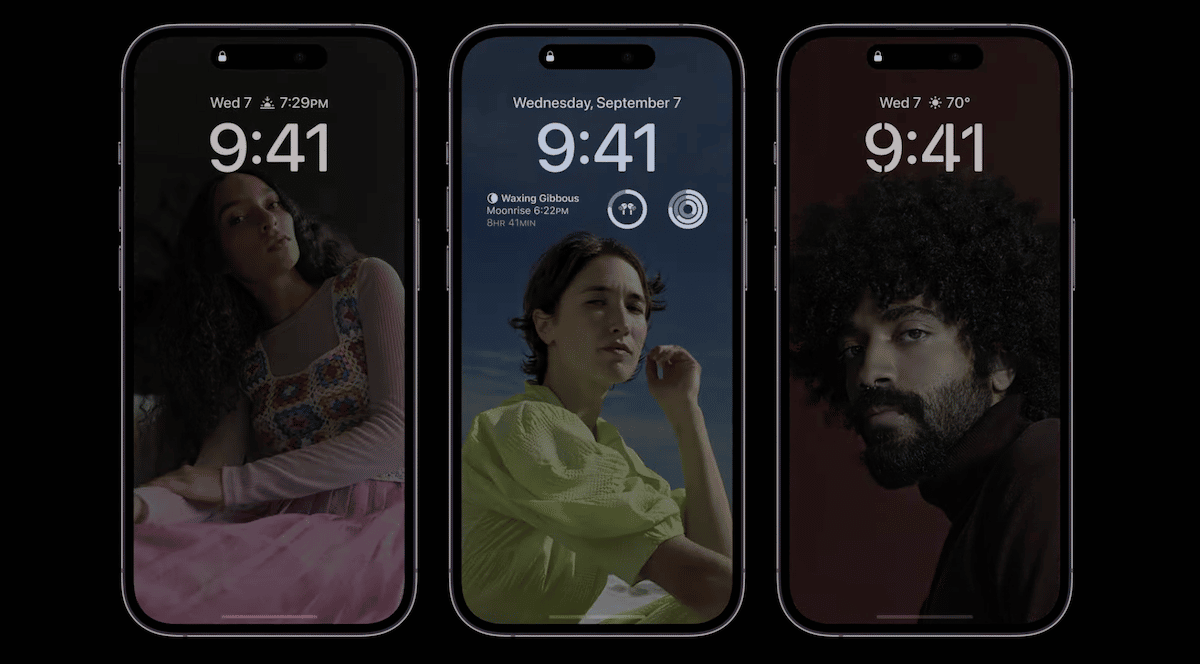Now that reviewers have been using the iPhone 14 Pro, we have found out that the Always-On Display only loses 4% battery life in 7 hours. Despite Apple’s unique implementation that shows the colorful lock screen even in always-on mode, the battery performance surpasses Android smartphones, which lose more battery when their mostly black-colored always-on display mode is in use.
This bit of news comes from Michael Fisher, popularly known as MrMobile on Youtube, who shared his experience of using iPhone 14 Pro’s Always-On Display on Twitter. He shared how the display becomes very dim when it hits always-on mode, when the 1Hz refresh rate and dedicated co-processor come into play. Apple does not allow users to change the brightness of the always-on mode, as it is just a toggle that users need to enable to use the feature.

Always-On Display on iPhone 14 Pro is incredibly power efficient
Apple’s always-on implementation shows a lot more information compared to the implementation by Android smartphones. Android phones just show battery charge level, notification icons, and date/time, on a black background. This helps save battery life as the black pixels are basically turned off on OLED displays.
As many have noted, Apple's is a fundamentally different execution of Always-On Display compared to Motorola, Samsung etc.
iPhone can display more information (by basically showing a super-dim version of the lock screen). Android keeps it much more minimal. Which do you prefer? pic.twitter.com/iDGzfmOtVc
— Michael Fisher (@Captain2Phones) September 14, 2022
Even when dimmed, iPhone 14 Pro’s display remains brighter than the competition in always-on mode. Despite the brightness, and colorful display, iPhone 14 Pro only loses 4% battery overnight. This is in contrast to Android smartphones which lose 1% battery per hour in always-on mode.
And, battery drain after leaving the AOD on overnight (no, didn’t enable Sleep Focus).
4% loss after 7 hours in a dark room ain’t bad pic.twitter.com/ohH2ZLS0EH
— Michael Fisher (@Captain2Phones) September 15, 2022
Even without an always-on display enabled, Android smartphones lose approximately 1% battery per hour, so this is quite an accomplishment for Apple to produce such a power-efficient implementation.
Apple also offers a sleep focus mode during which the always-on display turns off. Users can also flip their iPhone upside down to turn off the always-on display.
With regards to getting used to the different type of implementation on iPhone 14 Pro, as the display seems like it’s on, Michael also tweeted that he’s already adapting to it and thinks that people will get used to it quickly.
This should help users get rid of any concerns they might have had when looking at the always-on mode and wondering if it will use more battery than Android phones. Thanks to the use of ProMotion technology, OLED display, LTPO, 1Hz refresh rate, and dedicated co-processor, Apple has been able to accomplish this without any drawbacks.
Read more: